Upward Sloping Garden Ideas: Transform Your Hilly Yard into a Lush Paradise
Tackling a garden that slopes upwards can seem challenging, but it offers unique landscaping opportunities. Whether you’re looking to create a serene retreat or a vibrant plant display, an upward sloping garden can become a standout feature in your yard. You’ll find that with the right ideas and techniques, enhancing your sloped garden is easier than you think.
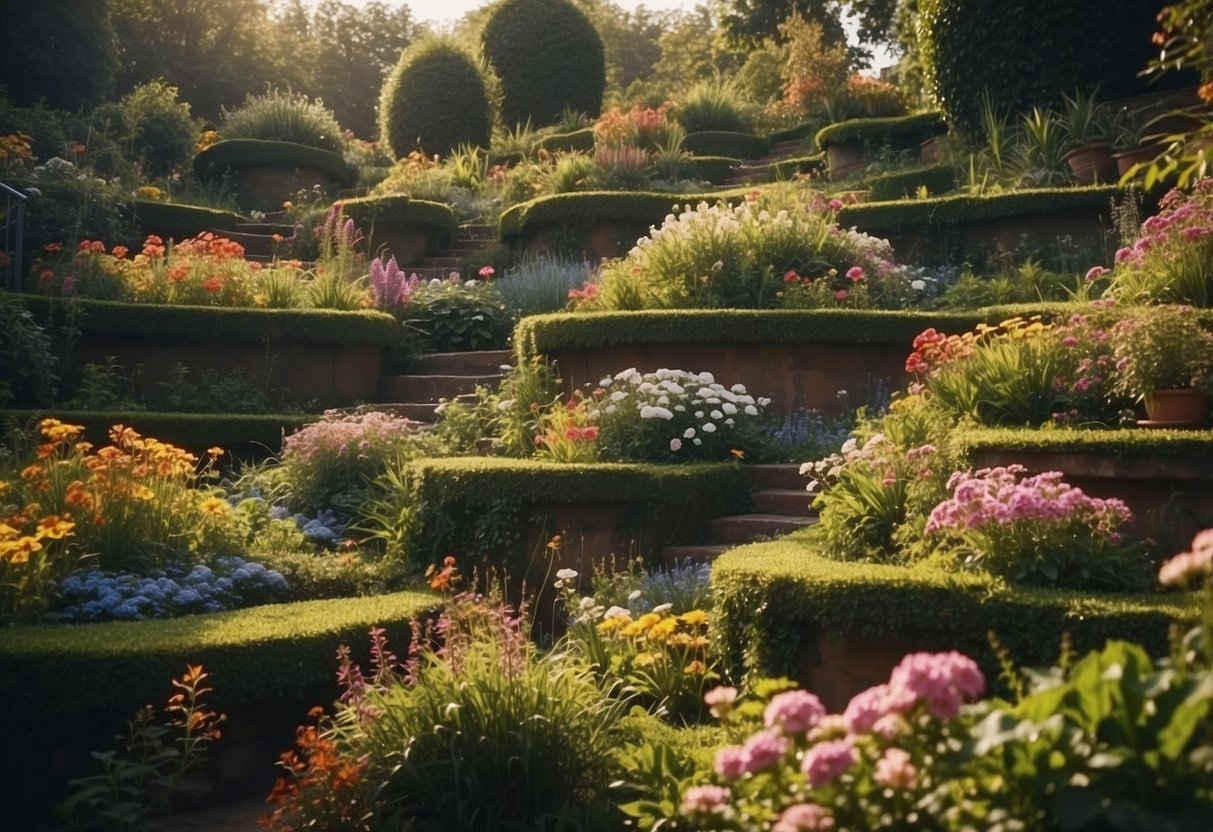
An upward sloping garden can add depth and dimension to your outdoor space. From terraced walls to creative plant arrangements, there’s a variety of ways to make your sloped garden beautiful and functional. Embrace the potential of your sloped garden and transform it into a stunning landscape that enhances your home’s appeal.
1) Terraced Retaining Walls
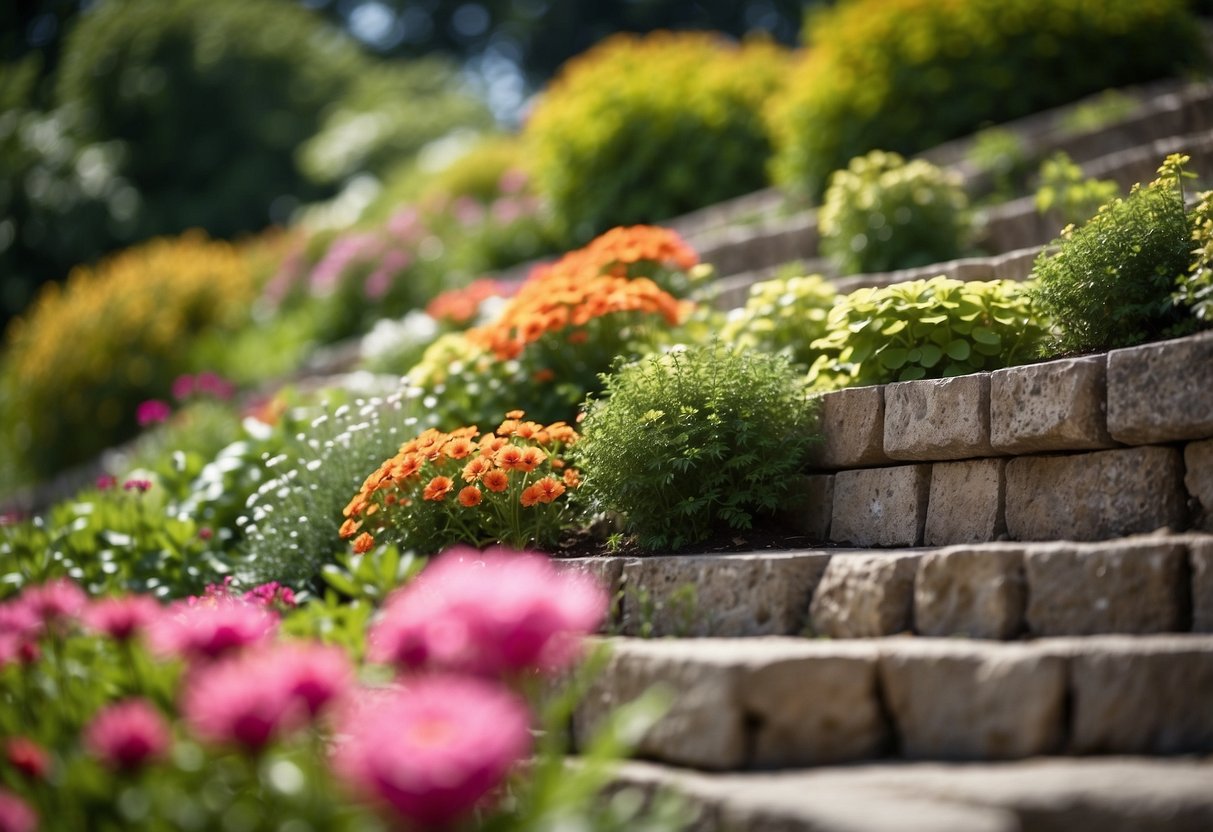
Terraced retaining walls can give your sloped garden structure and style. By creating levels, these walls help manage soil erosion and create flat planting areas. Use materials like natural stone, brick, or timbers for a rustic touch.
Group plants by height on each terrace to create a layered look. You can also mix in flowers, shrubs, and even small trees for variety. Terraced walls not only look great but also make garden maintenance much easier. For more ideas, check out these retaining wall ideas for sloped backyards.
2) Stone Pathways

Stone pathways can add charm and functionality to your upward sloping garden. They guide visitors through your garden while showcasing its beauty.
Using curved pathways can soften the look of a steep slope. Curves add a sense of calm and make your garden feel more inviting.
Incorporate spaced-out stones to create a natural, casual look. This style works well with irregularly shaped stones and encourages grass or ground cover to grow between.
3) Raised Flower Beds

Raised flower beds can make gardening on a slope much easier. These beds help prevent soil erosion and allow for better water retention.
You can use a variety of materials like wood, stone, or metal to build the frames. This gives you flexibility in design and cost.
Raised beds also make it simpler to care for your plants. You don’t have to bend as much, and the defined space helps keep weeds at bay. Plus, they add a neat, organized look to your garden.
For more ideas, check out Martha Stewart’s raised flower bed ideas.
4) Tiered Water Features

If you have a slope in your garden, a tiered water feature can be a great addition. Water cascades down multiple levels, creating a soothing sound.
Tiered water features can fit small or large spaces. You can even add plants around the tiers to make it blend with the garden.
To install a tiered water feature, you might need help with the water pump and electricity. An electrician can assist with this task. For inspiration, check out some ideas on tiered garden designs.
5) Sloped Vegetable Gardens
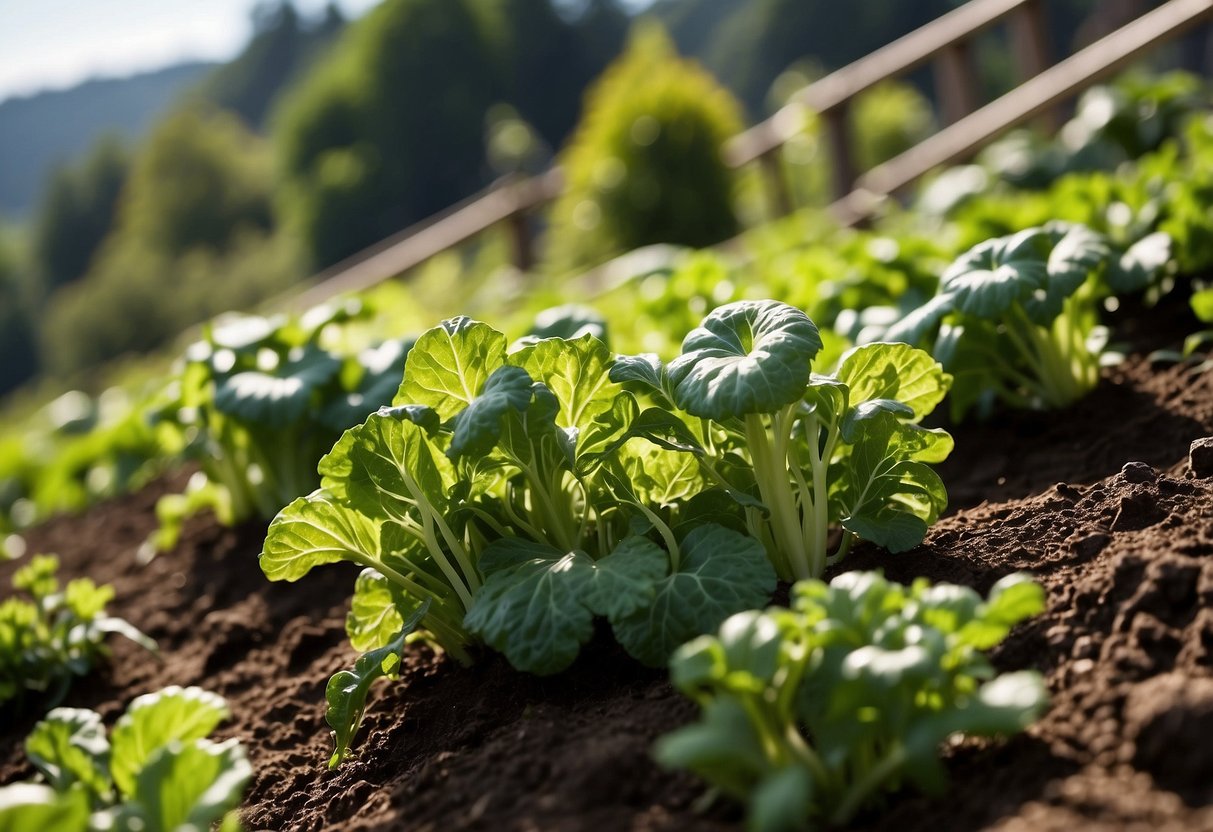
Creating a vegetable garden on a slope can be both fun and rewarding. Terracing is a simple way to deal with a sloping garden. You can create flat areas using retaining walls made from bricks, wood, or stones.
Slopes need to be stabilized to prevent soil erosion. Reinforced beds that run across the slope are very helpful. These beds make planting and maintaining your garden easier. It’s always a good idea to draw a side view of your slope to plan your garden layout properly.
6) Seating Nooks

Carving out seating nooks in your sloped garden can transform it into a cozy retreat. You can use benches, hammocks, or even suspended loungers to create these charming spots. These nooks provide a perfect place to relax and enjoy the views.
Consider placing seating areas at different levels of your garden. Each spot can offer unique perspectives and experiences. Garden seating areas are not only functional but also add to the beauty and usability of your space.
Add some shade with umbrellas or pergolas. This ensures you can enjoy your seating nooks even on sunny days.
7) Vertical Gardens

Vertical gardens are great for sloping areas. They let you make the most of your space.
By adding planters to a wall or fence, you can grow plants without taking up too much ground space. You can even build a wood slat wall and attach planters to it for a unique look. For more ideas, check out DIY vertical garden ideas.
Vertical gardens are a perfect way to bring green to steep areas. They create a beautiful and functional space. You’ll love how they change the look of your garden.
8) Sloping Lawn
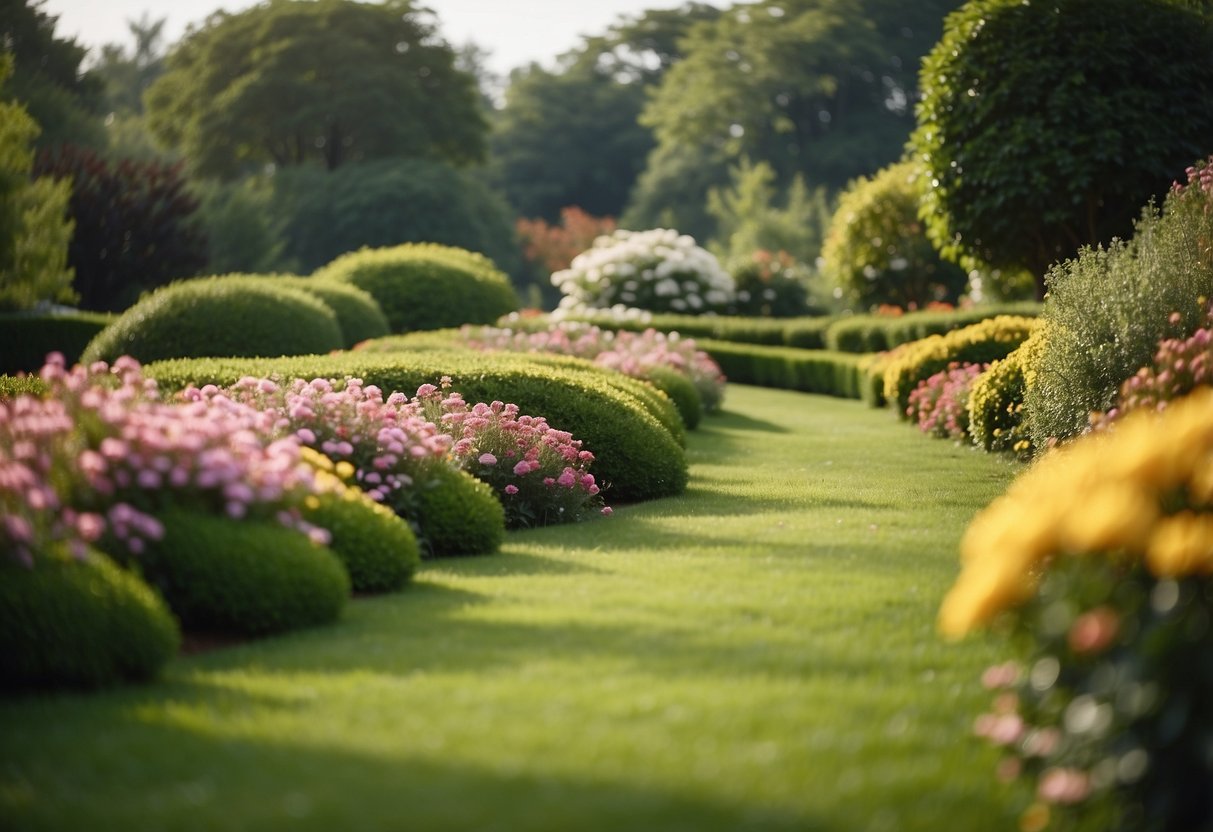
Creating a sloping lawn adds charm to your garden. Use grass that thrives on slopes, such as fescues or ryegrass.
Consider building terraces or steps to make areas more usable. Stone or wooden edging can help define these spaces and prevent erosion.
Mulching around the grass can keep moisture in and reduce the need for frequent watering. This also helps to prevent soil erosion.
Introduce curved pathways to make mowing easy and add aesthetic value. These will help you navigate the slope while maintaining the beauty of your garden.
9) Outdoor Staircases

Outdoor staircases can make your sloped garden more accessible and stylish.
Start by assessing your terrain to see where steps are needed. You can use materials like stone, wood, or concrete to create the stairs.
For a modern look, consider floating timber steps. These steps seem to hover, giving your garden a sleek, contemporary feel. More ideas can be found on this garden steps page.
10) Gravel Walkways
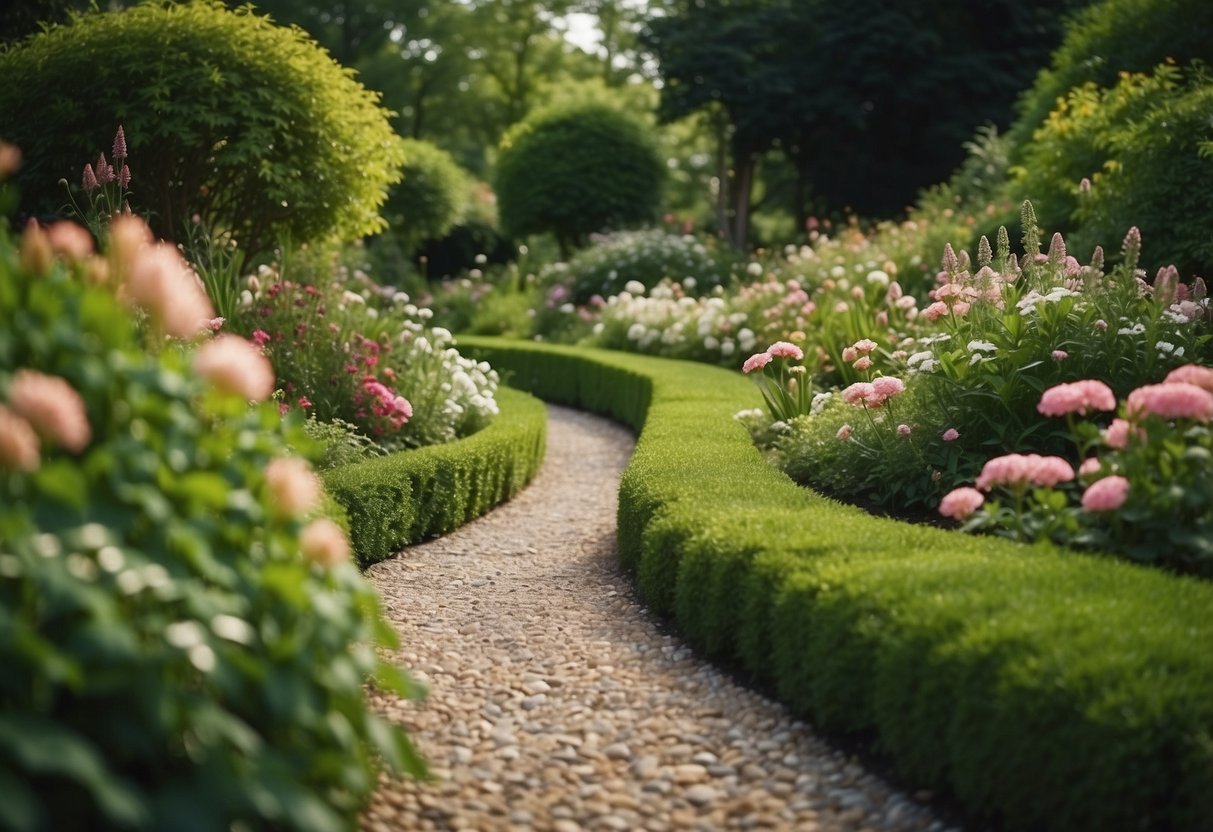
Gravel walkways are a great way to add charm to your sloping garden. They help guide foot traffic without damaging the greenery.
Gravel also provides excellent drainage, so you won’t have to worry about puddles forming. This keeps the pathway clean and safe.
You can choose from various colors and sizes of gravel to match your garden’s style. Using edging materials like stones or wood can help keep the gravel in place and define the path better.
Consider adding a few stepping stones or flagstones for a more rustic look. This will also make the walkway more stable and attractive.
Design Principles for Upward Sloping Gardens
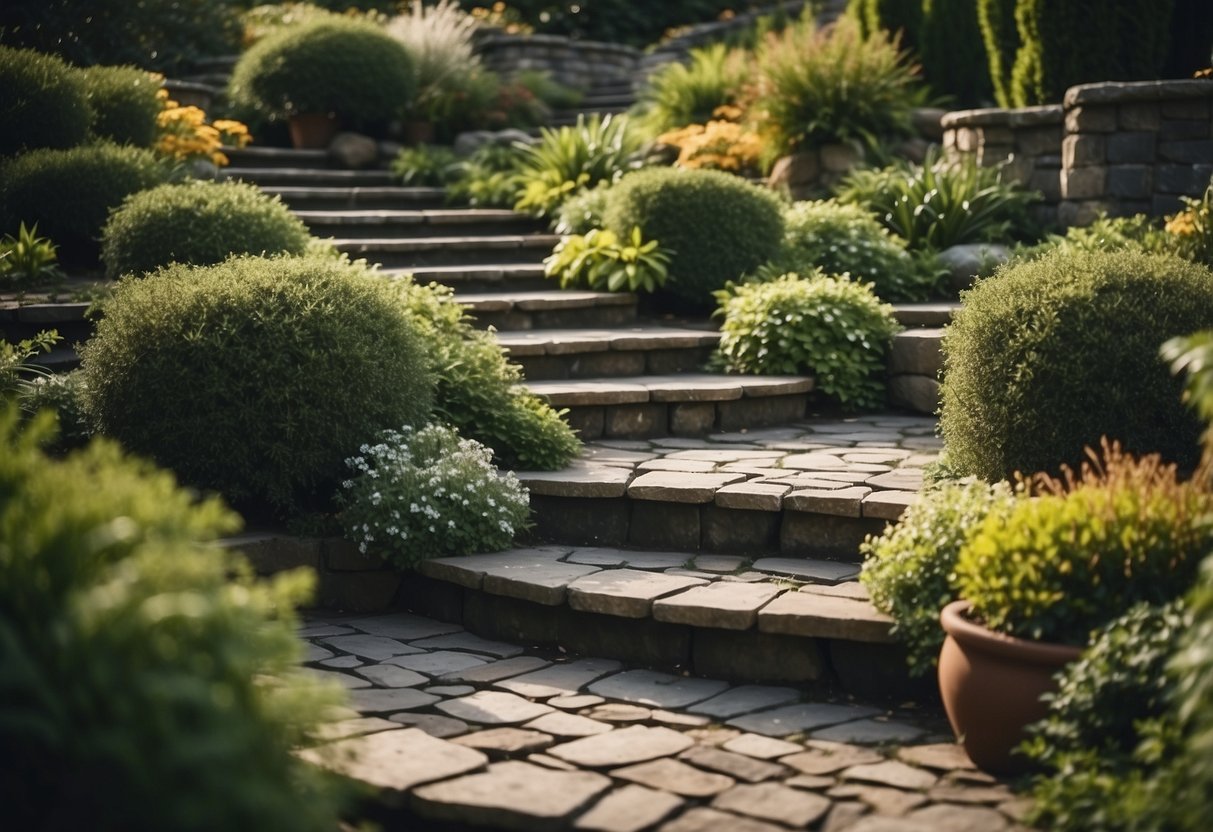
Creating gardens on upward slopes requires careful planning to choose suitable plants, integrate terraces, and understand the slope’s impact on design.
Understanding Different Slopes
Understanding your garden’s slope is crucial. Gentle slopes, offering subtle elevation changes, provide flexibility in planting and design. Steeper slopes demand more planning but can turn into dramatic landscapes. Measure the angle to determine whether it’s a gentle rise or a steep incline.
Erosion control is critical on steep slopes. Consider planting ground covers and installing erosion-resistant materials. Evaluate the soil quality as well; slopes often have varying soil depths and compositions which affect plant growth differently.
Choosing the Right Plants
Selecting plants that thrive on slopes is essential. Drought-resistant species like lavender, juniper, and ornamental grasses work well due to their deep roots and low water needs. These plants help stabilize the soil and prevent erosion.
Think about color and texture. Mix perennial flowers, shrubs, and trees to add interest and color throughout the year. Balance your design with plants that vary in height and spread, creating layered effects.
Integrating Terraces and Steps
Terraces and steps can improve access and manage steep slopes. Terraces create flat planting spaces and reduce erosion. Use natural stone or timber to build them, blending with your garden’s aesthetic.
Steps help navigate the garden easily. Design them with comfortable tread and riser measurements to ensure safety. Plant low-growing shrubs and herbs along the steps for added visual appeal. Integrate lighting for enhanced usability at night.
Soil and Erosion Control Solutions

Managing soil health and controlling erosion are critical for a successful garden on a slope. This involves choosing the right soil type and employing effective erosion control methods to keep your garden thriving.
Soil Types and Amendments
To garden on a slope, you need soil that stays in place and provides good nutrients. Loamy soil is generally the best because it holds water yet drains well. If your soil is too sandy or too clayey, you need to add amendments to improve its structure.
For sandy soil, adding compost can increase its ability to hold water. If you have clay soil, adding gypsum or organic matter like compost can improve drainage and structure. Regularly test your soil to know what nutrients it needs.
Consider using mulch to cover the soil. This helps retain moisture and prevents erosion. You can use organic mulches like straw, wood chips, or shredded leaves to improve soil over time.
Effective Erosion Control Methods
One way to prevent erosion is by building retaining walls. These walls hold the soil in place and can be made from wood, rock, or concrete. For added stability, you can create tiered retaining walls to form plant beds on different levels.
Using ground cover plants is another effective method. Plants like creeping thyme or juniper spread over the soil, holding it in place with their roots. They also add greenery to your garden.
Terracing is useful for very steep slopes. This method involves creating flat areas or steps on the slope, which can reduce water runoff and keep soil in place. Terraces can be edged with stones or other materials to further prevent erosion.
Another technique is installing drainage systems to control water flow. Using perforated pipes or French drains helps manage water runoff and reduce soil erosion, especially during heavy rains.
Water Management Techniques

Effective water management is essential for maintaining a healthy upward sloping garden. Key techniques include crafting runoff channels and implementing drip irrigation systems.
Crafting Runoff Channels
Runoff channels help direct excess water down the slope in a controlled way. These channels prevent erosion and ensure that water reaches all areas of your garden.
To create a runoff channel, start by identifying the natural flow of water on your slope. Dig shallow trenches following this path. You can add rocks or gravel to the trenches to slow water flow and reduce soil erosion. Also, consider incorporating plant barriers along the edges to further stabilize the soil and soak up excess water.
Runoff channels can be combined with contour trenches for even better water distribution. Contour trenches run parallel to the slope, capturing rainwater and allowing it to seep into the ground gradually. This technique helps keep your plants hydrated without causing waterlogged soil.
Implementing Drip Irrigation Systems
Drip irrigation is a highly efficient way to water your sloping garden. It delivers water directly to the plant roots, minimizing evaporation and runoff.
To set up a drip irrigation system, start by laying out the tubing along your slope. Place emitters near the base of each plant. You can adjust the flow rate to ensure each plant gets the right amount of water. Connect the tubing to a main water supply, and use a timer to automate watering, ensuring consistent moisture levels.
Drip systems are especially useful on slopes because they prevent water from quickly running downhill. This method conserves water and helps maintain soil integrity. It also reduces the risk of fungal diseases, as water does not remain on the leaves and stems.
Using a combination of these techniques will greatly enhance the health and sustainability of your upward sloping garden.







